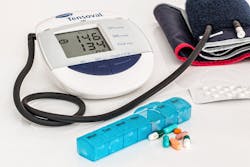Impact of ACA on uptake of preventive screenings and genetic testing
Based on a review of previously published studies, the University of Michigan Center for Value-Based Insurance Design concludes that the majority of studies show an increase in patients getting key screening services since implementation of the Affordable Care Act, though the picture is complicated by changes in recommendations about exactly who should get those services.
People who have the largest financial barriers to care saw the largest gains, at least in the subset of studies that included data about subgroups of patients. This includes those with low incomes, Medicare participants without supplemental insurance, and those who faced high costs for a service before the cost was eliminated.
Published in the journal Medical Care Research and Review, the review analyzes 35 original studies on 10 high-value preventive services recommended by official national panels of experts. No studies on the other 58 services were found or met the criteria for inclusion.
To avoid having to pay co-pays or deductibles under the ACA, a patient must be eligible for a particular screening, immunization, test, medication, or counseling under the recommendations of the U.S. Preventive Services Task Force, the Advisory Committee on Immunization Practices, or the Health Resources and Services Administration.
Those recommendations can change over time as more evidence about the impact of a service for a particular group is gathered, as was the case for breast and cervical cancer screening during the years covered by studies in the review.
Among the findings of the study, the researchers found that half of the studies identified by the review’s authors addressed breast cancer screening, and nearly half concluded that reduction in cost sharing led to increases in use. African Americans, and Medicare beneficiaries who don’t have supplemental insurance, saw larger increases.
But interpretation of the impact of cost-sharing elimination is complicated by the fact that in 2009, the U.S. Preventive Services Task Force changed its recommendations to increase the time between mammograms for women between the ages of 50 and 74, and to recommend against screening among women over 75. The authors also note that many insurers made screening mammograms free to patients even before the ACA.
Five studies have looked at the impact of making Pap smears and other tests available for no cost, and they show a modest effect. But as with breast cancer screening, a change in recommendations by the USPSTF that women over 30 should get tested every three years instead of every year complicates the ability to see an impact.
Eliminating cost-sharing for colonoscopy and other exams was only found to lead to increases in screening in three studies. But the authors note that researchers conclude that lost wages, embarrassment or discomfort at the invasive nature of colonoscopy, and fear of complications may be larger barriers than cost. Awareness of the lack of cost for this infrequent test may also contribute.
The authors looked at the available small numbers of studies of tobacco cessation, immunization, cholesterol and blood pressure checks, genetic testing for breast cancer risk linked to the BRCA gene, and weight loss counseling.
Cost-sharing elimination was linked to increases in use of prescription nicotine patches and gums, immunizations especially among young children, cholesterol and blood pressure measurements, BRCA testing and weight counseling.

